Bending channel with a porous media region (Local time stepping)
Case directory
$FOAM_TUTORIALS/compressible/rhoPimpleFoam/ras/angledDuctLTS
Summary
We calculate a flow with a porous material that models a filter in the middle of the flow path. The fluid flows in from the region "inlet" (end face of blue part) at a mass flow rate of 0.1 kg/s, passes through the filter (red part), and flows out from the region "outlet" (end face of green part).
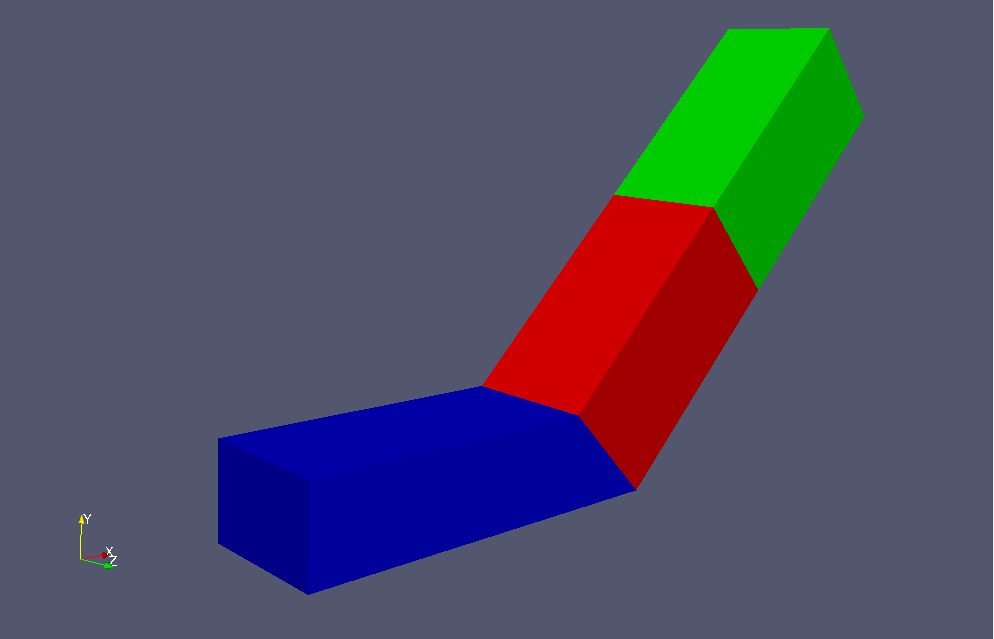 Model geometry
Model geometry
Local time stepping (LTS) is used as a calculation method. The local time stepping is a fast computation method that changes the time step for each mesh according to the mesh size. The local time stepping function is enabled by setting "localEuler" as ddtSchemes in the file "fvSchemes" in the directory "system", as shown below.
ddtSchemes
{
default localEuler;
}
Porous media depends on the Darcy-Forchheimer law 
The parameters that determine the properties of the porous media, Dij, F, the direction of the properties, and the region in which the porous media, are specified in the file constant/fvOptions as follows.
porosity1
{
type explicitPorositySource;
active yes;
explicitPorositySourceCoeffs
{
selectionMode cellZone;
cellZone porosity;
type DarcyForchheimer;
DarcyForchheimerCoeffs
{
d (5e7 -1000 -1000);
f (0 0 0);
coordinateSystem
{
type cartesian;
origin (0 0 0);
coordinateRotation
{
type axesRotation;
e1 (0.70710678 0.70710678 0);
e2 (0 0 1);
}
}
}
}
}
The standard k-ε model is used as the turbulence model, and calculations are performed for 500 seconds.
The meshes are as follows, and the number of mesh is 22000.
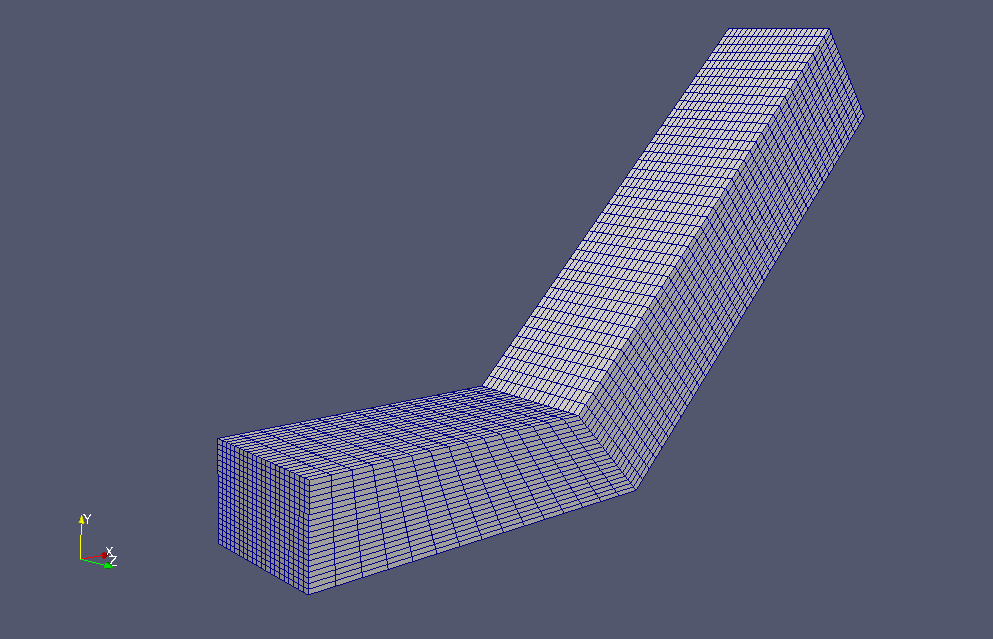 Meshes
Meshes
If you want to visualize turbulent energy and turbulent dissipation rate, check "k" and "epsilon" in the "Properties" tab in ParaView. you can see the time step size on each mesh by checking "rDeltaT" checkbox.
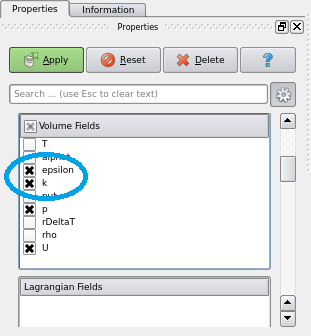 Check "k" and "epsilon" in "Properties" tab
Check "k" and "epsilon" in "Properties" tab
The calculation result at final time is as follows.
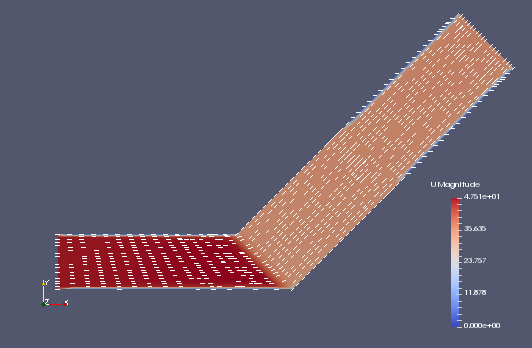 Flow velocity (U)
Flow velocity (U)
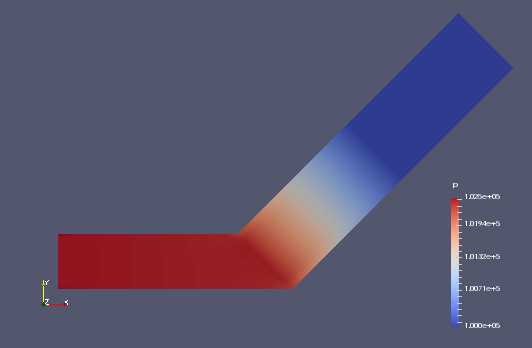 Pressure (p)
Pressure (p)
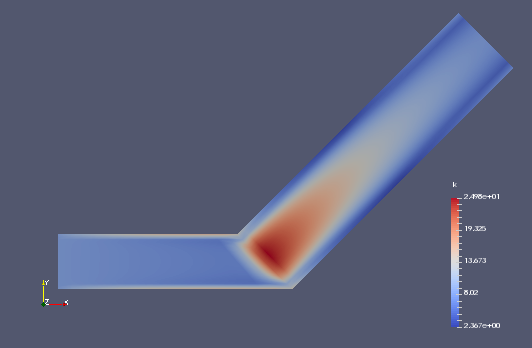 Turbulent energy (k)
Turbulent energy (k)
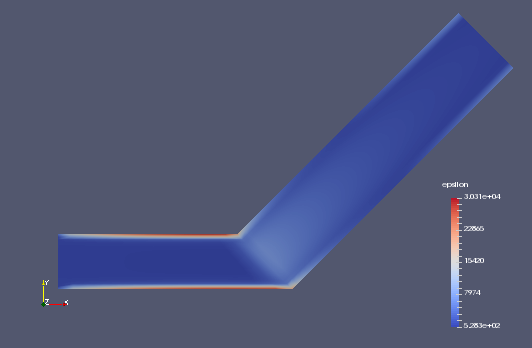 Turbulent dissipation rate (epsilon)
Turbulent dissipation rate (epsilon)
Commands
cd angledDuctLTS
m4 system/blockMeshDict.m4 > system/blockMeshDict
blockMesh
rhoPimpleFoam
paraFoam
Calculation time
21.14 seconds *Single, Inter(R) Core(TM) i7-8700 CPU @ 3.20GHz 3.19GHz
Reference
- Porous Media in OpenFOAM, HaukurElvar Hafsteinsson, Spring 2009
- "CFD基礎知識:局所時間刻み - koichiokadaswebsite", Koichi Okada
- "A new strategy for adapting time-step in the Local Time Stepping Method applied to hyperbolic PDEs", Quang Long Nguyen, MAMCDP 2009 Workshop(PDF)